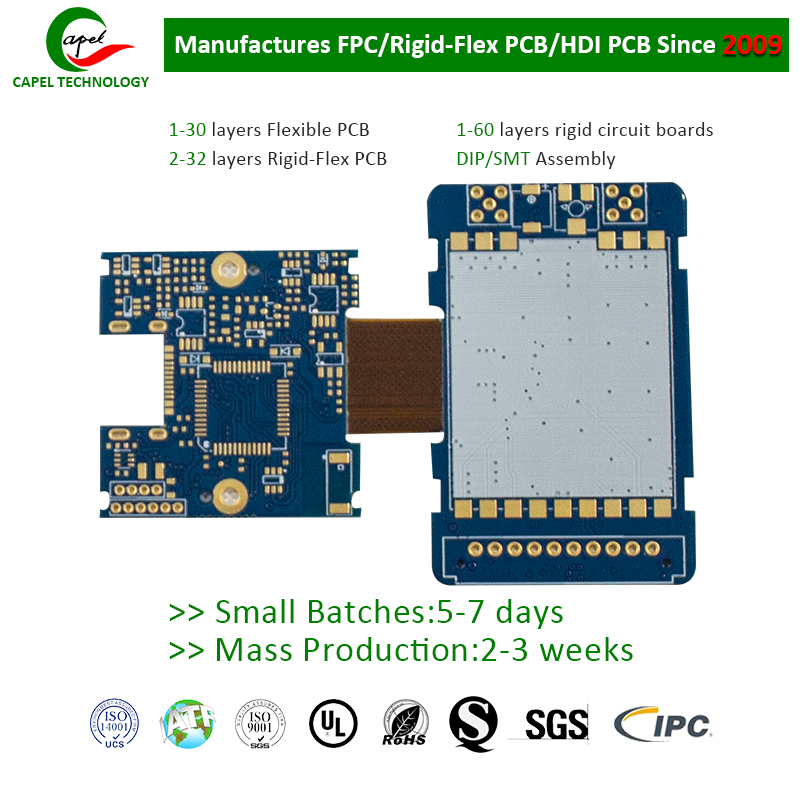Solving Routing and Interlayer Connection Challenges in 12-Layer Circuit Boards to Achieve Optimal Signal Quality and Reduce Crosstalk
Introduce:
Rapid advances in technology have led to an increase in the demand for complex electronic devices, resulting in the use of multi-layer circuit boards. These boards contain multiple layers of conductive tracks, providing a compact and efficient solution for electronic systems. However, as the complexity of these boards increases, various challenges arise, such as routing and interlayer connection issues. In this blog, we will dive into the complexities of solving these challenges in 12-layer circuit boards to achieve low crosstalk and high signal quality. So let’s dive in!
Understand the cabling challenges:
Effective cabling is essential to ensure smooth signal transmission and minimize interference. In a 12-layer circuit board, the denser trace layout significantly increases the complexity of the routing process. Here are some key strategies for meeting this challenge:
1. Place components carefully:
Thoughtful component placement plays a vital role in optimizing routing. By arranging components in a logical manner, we can reduce overall wire length and reduce the chance of crosstalk. Focus on minimizing the distance between critical components to ensure efficient signal flow.
2. Use the signal layer wisely:
Strategically assigning signal layers helps maintain signal integrity. Interference can be mitigated by grouping similar signals together in adjacent layers and providing adequate spacing between sensitive signals. Additionally, applying ground and power planes throughout the board helps control electromagnetic interference (EMI) and reduce voltage fluctuations.
3. Signal layer routing:
Routing signals carefully is key to preventing crosstalk. Use differential pairs or controlled impedance traces for high frequency signals. Implementing shielding techniques, such as incorporating ground planes between signal layers, can provide an additional layer of protection against cross-coupling and excessive noise.
4. Signal integrity and design rules:
Adhering to signal integrity and design rules is critical to achieving excellent signal quality. Perform a thorough impedance calculation considering the characteristics of the substrate and design constraints. Ensure proper termination and impedance matching to avoid signal reflections and data corruption.
Solve the problem of inter-layer connection:
In addition to routing challenges, ensuring effective interlayer connections is equally important for signal quality optimization. Let’s explore some techniques to solve the inter-layer connection problem:
1. Via placements:
Strategically positioned vias facilitate efficient signal flow between layers. Placing vias close to the signal source and destination minimizes the possibility of crosstalk and signal degradation. Blind or buried vias further enhance signal integrity by allowing connections to specific layers without penetrating the entire board.
2. Minimize via stubs:
Via stubs can cause signal attenuation, especially at high frequencies. By minimizing the length of via stubs, we can reduce reflections and signal loss. Various techniques such as backdrilling and microdrilling can help eliminate or reduce stub lengths.
3. Controlled impedance routing:
Achieving controlled impedance between the various layers is critical to maintaining signal integrity. Rigorous impedance calculations and careful trace routing ensure consistent impedance characteristics across the entire interlayer connection, minimizing signal distortion.
4. Stacked design:
Careful consideration of stack-up design can mitigate inter-layer connection challenges. Choose a symmetrical stackup using either prepreg layers or symmetrically positioned dielectric layers. With balanced material distribution, any signal passing through each layer will experience similar conditions, ensuring consistent signal quality across the entire board.
In conclusion:
The growing demand for high-performance electronic devices requires the use of multi-layered and complex circuit boards. However, solving the routing and inter-layer connectivity challenges in these complex boards is critical to achieving low crosstalk and high signal quality. By carefully placing components, judicious use of signal layers, implementing efficient routing, and considering optimal interlayer connections, we can overcome these challenges and ensure optimal performance from 12-layer circuit boards. Use these strategies to take your electronics design to new heights of success!
Post time: Oct-04-2023
Back







